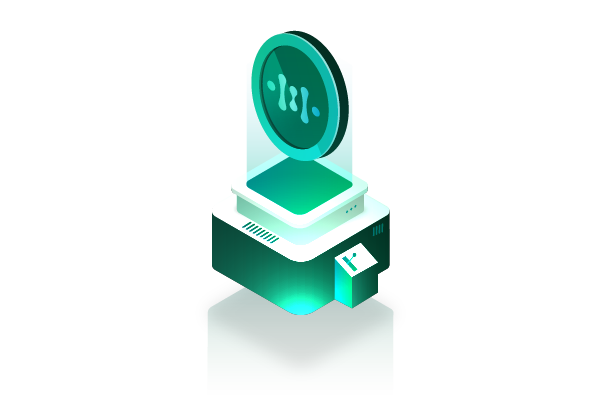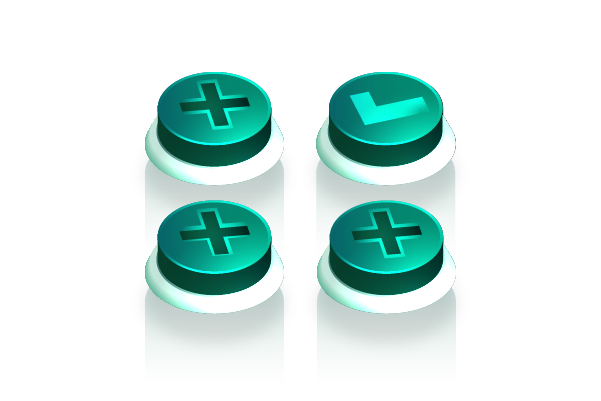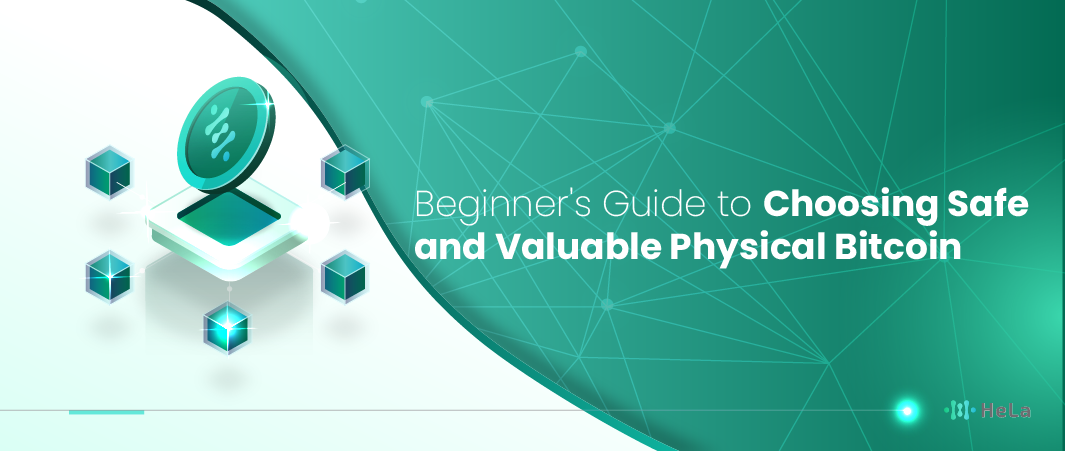Physical Bitcoin is a physical representation of the cryptocurrency Bitcoin that serves as a storage medium for the private key needed to access digital Bitcoin. Unlike digital Bitcoin, which only exists on the blockchain, physical Bitcoin comes in the form of metal coins or tokens that can be held and collected. For many people, this concept offers an intriguing way to connect with the crypto world in a more tangible manner. Physical Bitcoin: A Smart Choice for Investors & Collectors, because in addition to its crypto value, these coins are also appealing as collectibles with unique designs and a history tied to the early adoption of Bitcoin.
Although digital technology has made Bitcoin transactions increasingly easy and secure, physical Bitcoin still holds a special place in the hearts of collectors and crypto enthusiasts. If you are interested in investing or collecting, understanding how to choose safe and valuable physical Bitcoin is crucial. This article will provide a practical guide for beginners on how to select the right physical Bitcoin, covering everything from grasping the concept, choosing reputable manufacturers, to considering aspects of collectibility and investment. Don’t miss this valuable information, especially if you want to blend the crypto world with historic physical assets.
What Is a Physical Bitcoin?

Physical Bitcoin is a tangible representation of the cryptocurrency Bitcoin in the form of physical coins. Essentially, Bitcoin is a digital currency that exists on the blockchain network, but physical Bitcoin allows people to own Bitcoin in a form they can hold. These coins are typically made from metals such as gold, silver, or nickel, and are equipped with a public address and a private key written or hidden within them. Holders of these coins can access the digitally stored Bitcoin by importing the private key into a crypto wallet. This provides a real-world sensation for those who feel more comfortable with physical objects compared to something entirely digital.
Although these coins are visually appealing, physical Bitcoin is not widely popular for everyday transactions. One of the main reasons is the risk of losing the physical coin, which also means losing access to the digital Bitcoin contained within it. Additionally, the private key embedded in the coin can be vulnerable to theft or accidental disclosure. Beyond that, physical Bitcoin is more often regarded as a collectible item. Crypto enthusiasts and collectors typically view these coins as symbols of Bitcoin and the cryptocurrency world as a whole, making them valuable beyond just the Bitcoin they contain.
For collectors, physical Bitcoin often comes with special designs, unique serial numbers, and high-quality materials, adding to their allure as collectible items. One of the most well-known coins is the Casascius Bitcoin, first produced by Mike Caldwell in 2011. Casascius Bitcoin is a physical coin backed by real Bitcoin on the blockchain. This coin features a sealed hologram sticker that hides the private key behind it. If this seal is broken, the Bitcoin inside can be used, but the coin itself will lose much of its collectible value.
In general, the use of physical Bitcoin is becoming increasingly rare as Bitcoin itself is very easily accessible through digital platforms. However, for those looking to experience nostalgia or seeking unique collectible items, these physical coins still hold their own appeal. Nonetheless, it is important to remember that the authenticity and security of physical Bitcoin should be thoroughly checked, as there are risks of counterfeiting or losing access to the digital Bitcoin contained within if the private key is leaked or lost.
Who is The Pioneer Physical Bitcoin?
The pioneer of physical Bitcoin is Mike Caldwell, an American software developer who created the Casascius Bitcoin coins in 2011. Caldwell is recognized as the first person to introduce the concept of physical Bitcoin—physical coins backed by real cryptocurrency Bitcoin. Casascius Bitcoin allowed people to experience Bitcoin in a tangible form that could be held and stored like cash. Behind each Casascius coin was a hidden private key that enabled its owner to claim an equivalent amount of Bitcoin on the blockchain network.
Mike Caldwell’s innovation provided a new way for people to understand and engage with the world of cryptocurrency, which at the time was still very unfamiliar to most. Caldwell combined physical elements with cryptography to create something that could be seen and touched, while still being connected to the blockchain technology underlying Bitcoin. Casascius Bitcoin not only served as a way to store digital assets but also became a highly sought-after collectible among the crypto community and coin collectors. These coins were made from various materials, ranging from bronze to gold, with different Bitcoin values.
The coins came with a holographic seal that protected the private key inside. If the seal was broken, the Bitcoin could be accessed by importing the private key into a digital wallet, but the coin itself would lose much of its collectible value. This made Casascius Bitcoin particularly appealing to collectors, as they had to choose between keeping the coin intact to preserve its value as a collectible or opening it to access the Bitcoin within. Caldwell produced thousands of these coins, but production ceased in 2013 after the U.S. government issued a warning that these physical coins could violate regulations related to digital currency.
Also Read: Bitcoin Sentiment for Investment Strategies
Since then, Casascius Bitcoin has become increasingly rare and sought after by collectors. Mike Caldwell’s creation stands as a unique innovation in the crypto world, blending digital technology with physical elements, and he is honored as the pioneer of physical Bitcoin. Although Caldwell no longer produces the coins, his legacy lives on among collectors and Bitcoin enthusiasts. Casascius coins have become symbols of the early adoption of Bitcoin and represent the fusion of the physical and digital worlds within the cryptocurrency ecosystem.
How to Use A Physical Bitcoin?

Using physical Bitcoin is quite straightforward but requires careful steps. Physical Bitcoin, such as Casascius coins, stores the digital value of Bitcoin through a private key hidden behind a holographic seal. To access the Bitcoin, you first need to break the holographic seal on the coin. Behind the seal is a private key that can be used to claim the Bitcoin stored on the blockchain. This private key is a combination of letters and numbers that functions like a password to access the Bitcoin.
The first step after breaking the seal is to import the private key into your digital wallet. A digital wallet is an application or platform used to manage cryptocurrency assets. You can choose from various types of wallets, such as software wallets or hardware wallets. In the digital wallet app, there is usually an option to “import private key.” Once you enter the private key found on the physical coin, your wallet will immediately show the amount of Bitcoin associated with that key. This process converts the Bitcoin from its physical form to digital form, which can then be traded.
However, it’s important to note that once the private key has been imported and the physical coin opened, it no longer functions as a physical Bitcoin in the original sense. Although the coin can still be kept as a souvenir or collectible, the digital value of the Bitcoin has already been transferred to the digital wallet. Additionally, opening the holographic seal decreases the collectible value of the coin, especially if it is a limited edition or a Casascius Bitcoin that is no longer in production. So, if you wish to use the Bitcoin within, make sure to consider whether you prioritize accessing the digital asset or preserving the physical coin’s value as a collectible.
Security is also crucial when using physical Bitcoin. Since the private key is the only way to access the stored Bitcoin, anyone who obtains the key can steal your Bitcoin. Therefore, it’s essential to store physical Bitcoin in a safe place and ensure that the private key doesn’t fall into unauthorized hands before you decide to use it. Using physical Bitcoin offers a unique experience that bridges the physical and digital worlds but also requires extra responsibility to safeguard the value and security of both aspects.
How to Choose Physical Bitcoin for Beginner?

Choosing physical Bitcoin as a beginner requires an understanding of how they work and how to identify trusted products. Physical Bitcoin differs from digital Bitcoin, as they typically come in the form of metal coins or tokens with a private key linked to a certain amount of Bitcoin on the blockchain. Here’s a guide to help beginners choose physical Bitcoin:
Understand the Concept of Physical Bitcoin
Physical Bitcoin is a representation of digital Bitcoin in the form of coins or tokens. These coins usually have attractive designs and are engraved with a serial number, along with a Bitcoin address or a private key hidden behind a sticker or seal.
This private key allows the coin’s owner to access the Bitcoin associated with it on the blockchain. As a beginner, it’s crucial to understand that the coin’s actual value lies in the Bitcoin embedded within it, not in the material of the coin itself.
Choose a Trusted Manufacturer
Ensure you purchase physical Bitcoin from a well-known and trusted manufacturer. One of the most recognized names in the world of physical Bitcoin is Casascius, which produced high-reputation physical Bitcoin coins before halting production in 2013.
While Casascius coins are now difficult to find, they set an example of quality. Today, other companies may offer similar products, but it’s important to do your research and read reviews from the Bitcoin community to avoid being scammed by counterfeit coins.
Verify the Authenticity and Security of the Private Key
The authenticity of physical Bitcoin lies in the private key sealed within the coin. If this seal has been tampered with or opened, it means someone may have already accessed the private key and used the Bitcoin.
Therefore, always check the condition of the coin’s seal before purchasing. Additionally, ensure the coin has a certificate of authenticity or other security features that can help verify that the associated private key has not been used or compromised.
Consider Collectible Value vs Investment Value
Many people buy physical Bitcoin as collectibles, not solely for the value of the Bitcoin itself. Some limited-edition physical Bitcoin coins hold higher value as collectibles, even if the Bitcoin they contain is not substantial.
If you’re interested in collecting, focus on coins with attractive designs, high-quality materials, or limited editions that can enhance their value as collectibles. However, if your goal is investment, focus on the amount of Bitcoin embedded in the coin and ensure you can redeem the Bitcoin in the future.
By following these steps, you can choose physical Bitcoin that is secure and suits your needs as a beginner.
The Future of Physical Bitcoin
The future of physical Bitcoin may appear less bright compared to the popularity of digital Bitcoin, but it still holds a special place in the crypto world, particularly as a collectible and a historical symbol. As blockchain technology continues to evolve and public awareness of digital currencies increases, the use of physical Bitcoin as a transaction tool is likely to decline. This is because digital Bitcoin is far easier to access, trade, and store securely through hardware or software wallets. However, physical Bitcoin remains appealing to collectors, crypto enthusiasts, and those intrigued by the symbolism behind these physical coins.
As a collectible, physical Bitcoin has the potential to retain value in the future. The rarer physical coins like Casascius Bitcoin become, the higher their collectibility value. Collectors tend to appreciate physical Bitcoin for its connection to the early days of the digital currency revolution. Additionally, physical Bitcoin offers crypto enthusiasts a way to own a tangible piece of history. These coins not only represent crypto assets but also the moment when Bitcoin started gaining adoption by the public. In this context, physical Bitcoin is likely to endure as a valuable item within the realms of crypto history and collection.
From a utility standpoint, however, physical Bitcoin may not see significant development. Bitcoin storage and management technologies have advanced significantly, with digital wallets and offline storage (cold storage) solutions offering greater security and accessibility. With these innovations, people are more inclined to use purely digital solutions rather than reverting to physical forms like coins. The likelihood of physical Bitcoin being used for transactions in the future is slim, as digital transactions are faster, safer, and cheaper compared to managing physical Bitcoin.
Also Read: Bitcoin ETFs: The Definition And How Does It Work
In the future, physical Bitcoin will likely become a historical artifact within the crypto space, valued more for its collectibility than its function as a store of value. As cryptocurrency adoption continues to grow globally, the focus will shift more towards technological innovations and enhanced security within the digital ecosystem. Nonetheless, for collectors, physical Bitcoin will remain an intriguing part of crypto’s evolution, serving as a bridge between the physical and digital worlds in the ever-advancing blockchain technology landscape.
Conclusion
Physical Bitcoin offers a unique way for people to own and interact with Bitcoin in a physical form. While its primary function is to store the private key that enables access to digital Bitcoin, the value of these coins also lies in their appeal as collectibles with their own history in the crypto world. For those who are new to the realm of physical Bitcoin, it’s essential to understand that the security of the private key and the authenticity of the coin are key considerations. Through this guide, you can learn how to choose safe coins, whether for investment or collecting purposes.
Physical Bitcoin: A Smart Choice for Investors & Collectors, as these coins not only provide access to the digital value of Bitcoin but also carry historical and collectible value. Although technological advancements have made storing and transacting Bitcoin digitally much easier, physical Bitcoin retains its unique charm. For collectors, these coins become valuable artifacts that connect the physical world with the early developments in cryptocurrency adoption. With the right understanding, physical Bitcoin can be a smart choice for both long-term investment and enhancing your valuable collection.
Disclaimer: The information provided by HeLa Labs in this article is intended for general informational purposes and does not reflect the company’s opinion. It is not intended as investment advice or a recommendation. Readers are strongly advised to conduct their own thorough research and consult with a qualified financial advisor before making any financial decisions.

